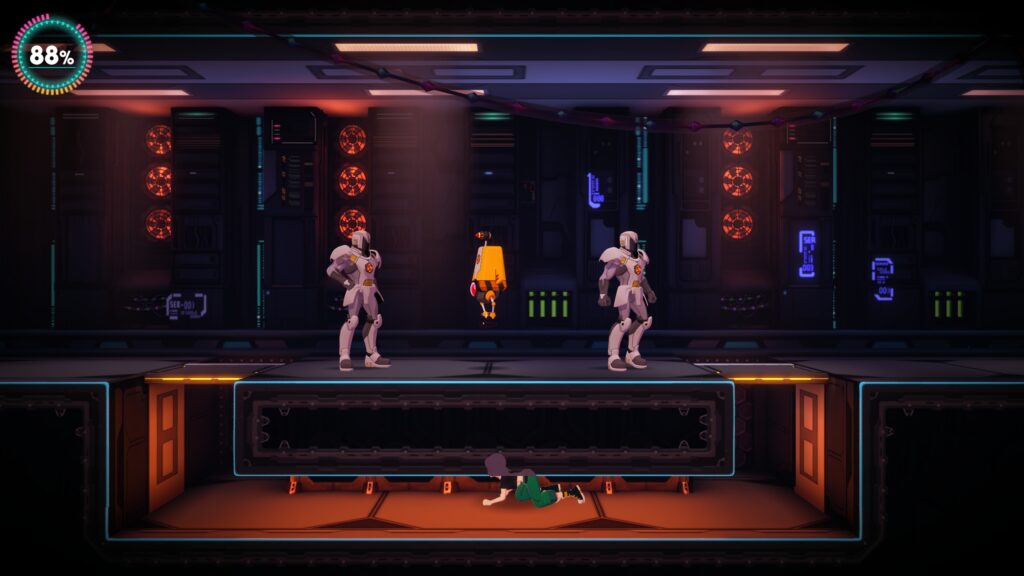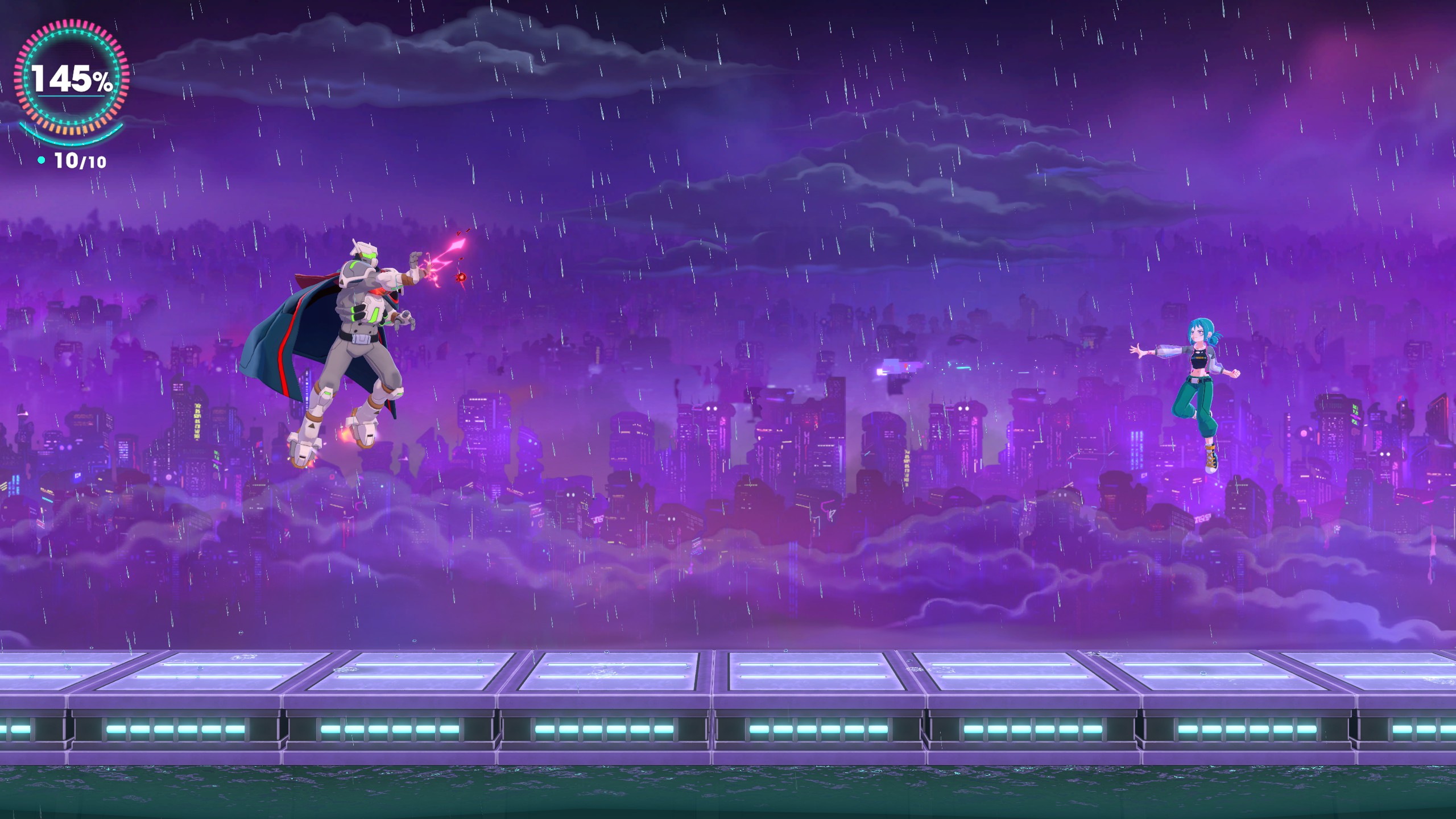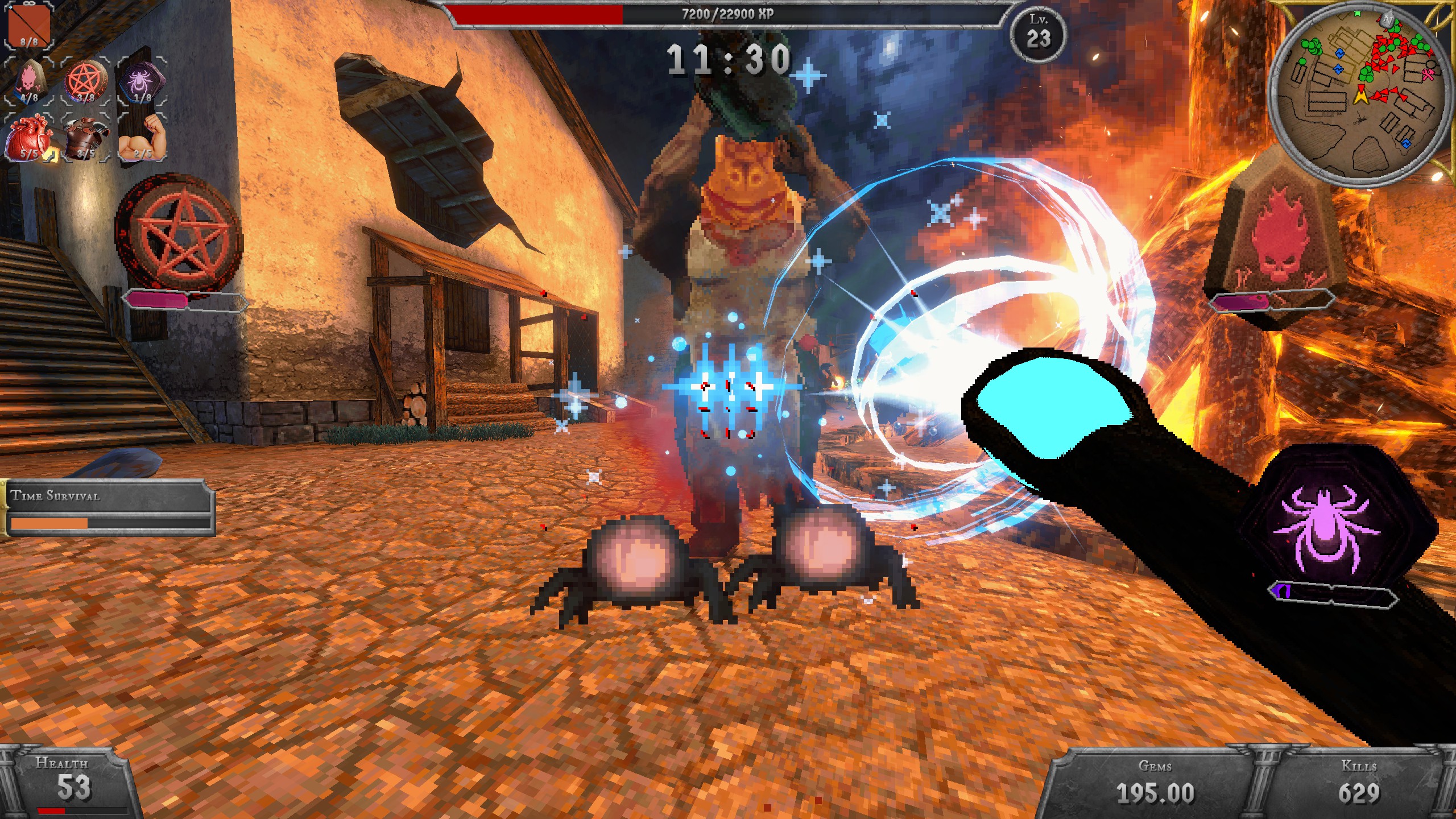Not content with Yars: Recharged, Atari’s classic game has shockingly gotten another reimagining. Even more surprising, it’s a Metroid-like this time. Yars Rising is far from the most unique or original game around and, on the normal difficulty, it’s incredibly handholdy. But the lengths developer WayForward have gone through to actually make it just as much of a Yars game as a Metroid-like is pretty astounding. Coupled with a fun script, a charming (if occasionally annoying) main character, and some very high quality voice acting, this is still a worthwhile game as long as you’re fond of the classic it’s based on.
Yars Rising might not seem to have much to do with the original game narratively (yes, the Atari 2600 game had a story,) but there’s quite a bit of the backstory present here. You play as Emi Kimura, who appears to be named after the original game’s cover artist, Hiro Kimura. Emi works at a company named QoTech and is secretly hacking them for an anonymous employer. When she gets busted, she finds herself embroiled in a plot that threatens the universe. Despite the game being 2.5D, everything here is modelled in 3D. The visuals are decent, albeit somewhat bland, although they do get the job done.
There’s a fairly significant amount of dialogue in Yars Rising. Emi, in particular, seems to always be talking, with tons and tons of unique voice lines. I don’t think I heard even a single repeated line of dialogue in the eight hours I spent with the game. It’s all fully voiced and the cast does a great job. Emi’s voice actor has pretty terrific comic timing and is often quite funny, although the constant mugging can come across as trying too hard in spots. I still enjoyed it all the way through, including when she mocks the game’s design tropes with some frequency.

In typical Metroid-like fashion, Emi runs and jumps around. She fights primarily with an energy shot reminiscent of Mega Man, but gets two kinds of missiles as the game progresses. The controls are good and the rate at which you receive new abilities to better explore is very satisfying. You’ll end up being able to walljump, dash, and high jump. It constantly feels like the controls are evolving. A couple of abilities also appear to be direct references to ones in Castlevania: Aria of Sorrow, which I enjoyed seeing. However, Yars Rising doesn’t really hold up as a Metroid-like on its own merits, as it’s going for something else.
Every ability you unlock, every locked door, and nearly every main objective you need to accomplish requires Emi to hack a terminal. This makes sense, as she’s a hacker, after all. But whenever you do this, you have to play a unique Yars level. You control a fly that has to usually destroy an enemy unit. There’s far, far more variety to these levels than there is in the original game. There are many varying objectives and these can often be significantly more challenging than the platformer gameplay here. For all intents and purposes, this game doesn’t just use the Yars licence as window dressing. This is a full-on Yars game.
Each hack unlocks itself for play in the main menu’s hack list. But there’s also an entire set of pro hacks that can only be played here. The breadth of these is surprising. The caveat here is that you really do need to like these little levels to truly enjoy Yars Rising. They’re not throwaway minigames, they’re very much the other half of the equation. Honestly, I did think there were a bit too many of them, especially since I hunted down every single hackable terminal in the game. Many of these guard the game’s upgrades and I 100%ed the map while going through the main story.

Speaking of which, there’s always a beacon or two (or three) showing you exactly where to go in the game, which is annoying. Areas that aren’t yet accessible due to lacking the required upgrade are clearly indicated as such on the map, while areas you can now reach have dotted white lines pointing to them. On one hand, I kind of appreciated the clarity of this, but it’s also the antithesis of the genre. Thankfully, beating the game unlocks a difficulty that removes all of this, so you can play it like a normal Metroid-like on your second go around if you so choose.
Beating hacks via optional upgrade terminals gives you a new upgrade that can be slotted into your loadout. This loadout is made up squares shaped like the Yars fly. Unfortunately, you can only have a single loadout, which was a poor choice since I’d prefer if there was one each for the regular and hacking gameplay. In the late-game, I found myself swapping hacking upgrades in and picking specific ones to make certain hacks easier. It’s honestly pretty unique and cool, despite how cumbersome it can be. Upgrades are how you increase Emi’s health, damage, and how much ammo she has too. I trivialised the game’s short final boss encounter simply by loading up all the healing upgrades at once.
Yars Rising is simply too handholdy on the standard difficulty and the hacking will probably scare off anyone that simply doesn’t like Yars Revenge, but I very much enjoyed this game overall. It was amusing and I did feel compelled to scour the map, although that’s partially because the game would be quite short if just focusing on the main story. Still, this combination of an old Atari game with a Metroid-like design is a very distinct and interesting choice that I think makes the game worth looking at.

Yars Rising: Yars Rising might not do much new for Metroid-like fans, but its combination of arcade gameplay, 2D shooting, and platforming make for an enjoyable game. – Andrew Farrell
Check out our previous review:
Train Sim World 5 PC review – Around the bend, again |




